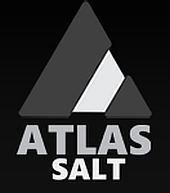 Crystal Lake testing finds Cu, Ni, PGE anomalies at EL5
Crystal Lake testing finds Cu, Ni, PGE anomalies at EL5
Mr. Wally Boguski reports
CRYSTAL LAKE USES SGH DEEP PENETRATING GEOCHEMISTRY TO PROBE FOR NICKEL-COPPER-PGE’S TARGETS AT DEPTH ON FARM EL5 CLAIM
Crystal Lake Mining Corp. has released the first exploration results on its optioned property in Northwestern Ontario referred to as the Farm property or EL5.
This property was staked due to an unexplored highly magnetic anomaly. The difficulty of finding a source of high-grade nickel-copper sulphides in an overburden-covered area devoid of outcrops prompted management to employ an interpretative study referred to as SGH (spatiotemporal geochemical hydrocarbons). SGH differs from conventional geochemistry as it is an organic, deep-penetrating geochemical survey which targets individual metals. In this instance, nickel, copper and platinum group elements were analyzed and presented as separate anomalies. SGH is the only known organic geochemical method that, in spite of the name, uses non-gaseous semi-volatile organic compounds interpreted using a forensic signature approach. The analysis involves the testing for 162 hydrocarbon compounds in the C5 to C17 carbon series. These hydrocarbons have been shown to be residues from the decomposition of bacteria and microbes that feed on the target commodity as they require inorganic elements to catalyze the reactions necessary to develop hydrocarbons and grow cells in their life cycle. Specific classes of hydrocarbons have been successful for delineating mineral targets found at over 950 metres in depth. SGH is unique and should not be confused with other hydrocarbon tests or traditional analyses that measure C1 (methane) to C5 (pentane) or other gases. Thus, in spite of the name, SGH does not analyze for any hydrocarbons that are actually gaseous at room temperature.
Interpretation was based solely on SGH data and did not include the consideration from any other geochemistry (inorganic), geology or geophysics related to the survey area. The survey was run, however, to test for mineralization over a broad magnetic anomaly. The interpretation of the SGH data is in reference to a template or group of SGH classes of compounds specific to a type of mineralization that is chosen by the client (for instance, in this instance copper, nickel, platinum). The SGH pathfinder-class maps are often expected to illustrate an anomaly that is a vertical projection over mineralization at the shallowest location.
On the EL5 property it is the laboratory’s expert opinion that the SGH geochemical test appeared to perform well and illustrated copper, nickel and PGE anomalies that had the proper dispersion and thus appeared to agree with the characteristics of a copper-nickel-PGE type deposit. The outstanding nested-segmented halo anomaly vectors to the source of the weakness in the basement where upwelling of mineralized fluids may have occurred. Separate anomalies with signatures associated with copper, nickel and with PGEs were discovered, possibly indicating a zonation or structural feature of the suspect mineralization. Note that this interpretation is based only on the analytical results provided by the SGH nanogeochemistry results. Drilling of highly rated anomalies (five of six) are targets at present. But drilling will probably be deferred until SGH results have been attained from the pending SGH survey extension. Work is continuing.
Paul Pitman, BSc, PGeo, is a qualified persons as defined by NI 43-101 and has reviewed and approved the technical contents of this press release regarding the EL5 property, one part of the exploration project undertaken in Northwestern Ontario.
About the company
Crystal Lake Mining is presently completing the analysis of a stage 1 drilling program in and around Emo, Ont.
http://crystallakeminingcorp.com/news.html
































